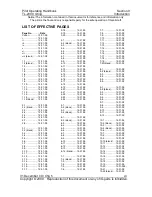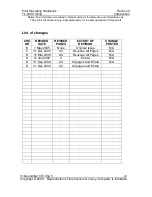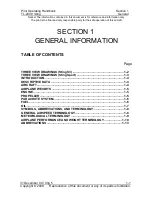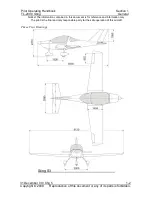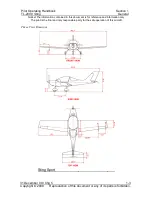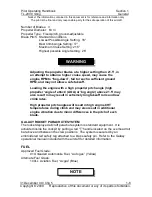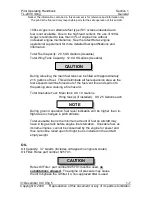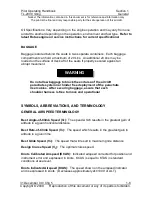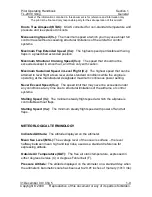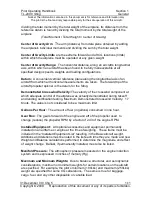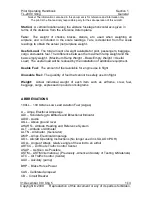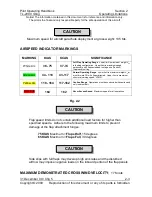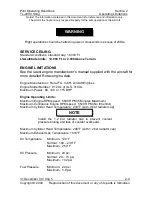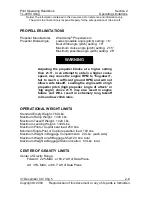
Pilot Operating Handbook
Section 1
TL-2000
Sting
General
Notice! The information contained in this document is for reference and information only.
The pilot is the final and only responsible party for the safe operation of this aircraft.
31 December 09 / Chg 5
1-10
Copyright © 2009 Reproduction of this document or any of its parts is forbidden.
Standard Temperature:
15°C at sea level pressure altitude. (Decreases
approximately 2°C for each 1000 feet increase of altitude.)
True Altitude:
The true height above mean sea level (MSL). True altitude is
indicated altitude corrected for nonstandard atmospheric pressure.
AIRPLANE PERFORMANCE AND WEIGHT TERMINOLOGY
Arm:
The horizontal distance expressed in inches from the reference datum plane
to the center of gravity (CG) of an item or location.
Units of measurements and weights must be consistent for each set
of calculations and in the same system of units, i.e., pounds and
inches, or kilograms and centimeters.
Auto Gas
– Automobile fuel, 91 Octane is min auto gas rating for Rotax engines
Avgas
– 100 Octane Low Lead Aviation Fuel (100LL) (Max 30% use in Rotax)
Ballast:
A specific amount of weight attached in a specific location, which can be
temporarily or permanently installed in an aircraft, to help bring its CG within the
required limits. If temporary ballast must be used for certain operations, the exact
amount and its location must be placarded on the instrument panel within clear view
of the pilot. The use of Ballast increases Empty Weight and reduces Useful Load.
Basic Empty Weight:
The standard empty weight plus the weight of any
additionally installed or optional equipment.
Basic Empty Weight Center of Gravity.
The CG of an aircraft in its basic empty
weight condition, and is an essential part of the weight and balance record.
Big Angle
– Large AOA of the Propeller blade in relation to the air stream
Brake Horsepower:
The power developed by the engine expressed in horse-
power and measured by an instrument resisting (brake) device.
Center of Gravity (CG):
A point along an aircraft’s longitudinal axis at which all the
loads and forces are perfectly concentrated and balanced. It is computed by
NOTE



